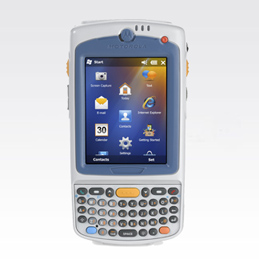Motorola offers hospitals Windows Mobile


It is a ruggedized Windows Mobile device with a 3.5 inch screen and a mini-keyboard designed for use on the wireless LANs that are all the rage in hospitals today.
It sports a 806 MHz processor (half the speed of the latest Intel Atom chips) and before you go dumping on Windows Mobile, understand that many hospitals today run on Windows, not just using Microsoft Amalga but other mainline health IT players as well.
The idea is that doctors and nurses can pull down a patient's Electronic Medical Record and double-check prescriptions as they are filled, place orders for drugs and lab tests, and enable closer inspection of hospital workflows.
As a phone it includes Voice over IP and push-to-talk features, and it's inexpensive enough to be given to everyone on the floor, including nurses. Back-end software can then deliver an audit trail of everything done for the patient, including checks on tests and doses done at the bedside.
Also, since the device is LAN-only it won't work outside the facility. This acts as a double guard against the theft of medical records, in addition to security placed on those records by software.
It's important here to note all the moving parts in current hospital automation efforts:
- Servers or cloud-based services holding Electronic Medical Records, which include test results and could include intelligence-based recommendations.
- Wireless networks, secured WiFi bridges that fill the hospital with connections running at up to 100 Mbps.
- Connected testing gear, meaning labs and imaging stations can deliver results directly to the bedside.
- Personal client devices, whether laptops, tablets, or (as in this case) something the size of an iPhone, for use on the floor.
All this requires an enormous amount of system integration, which is why the health IT market is growing as fast as it is.